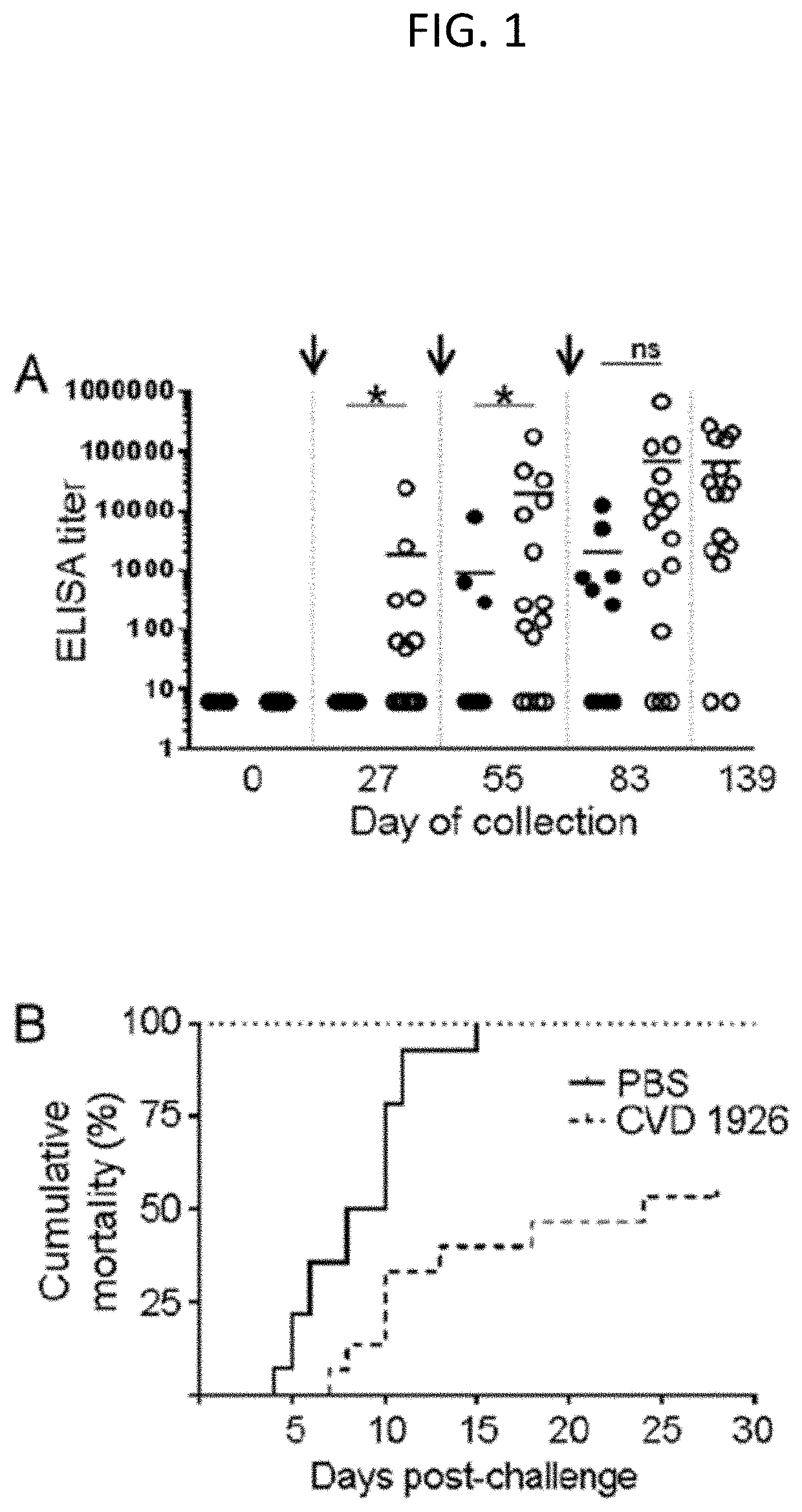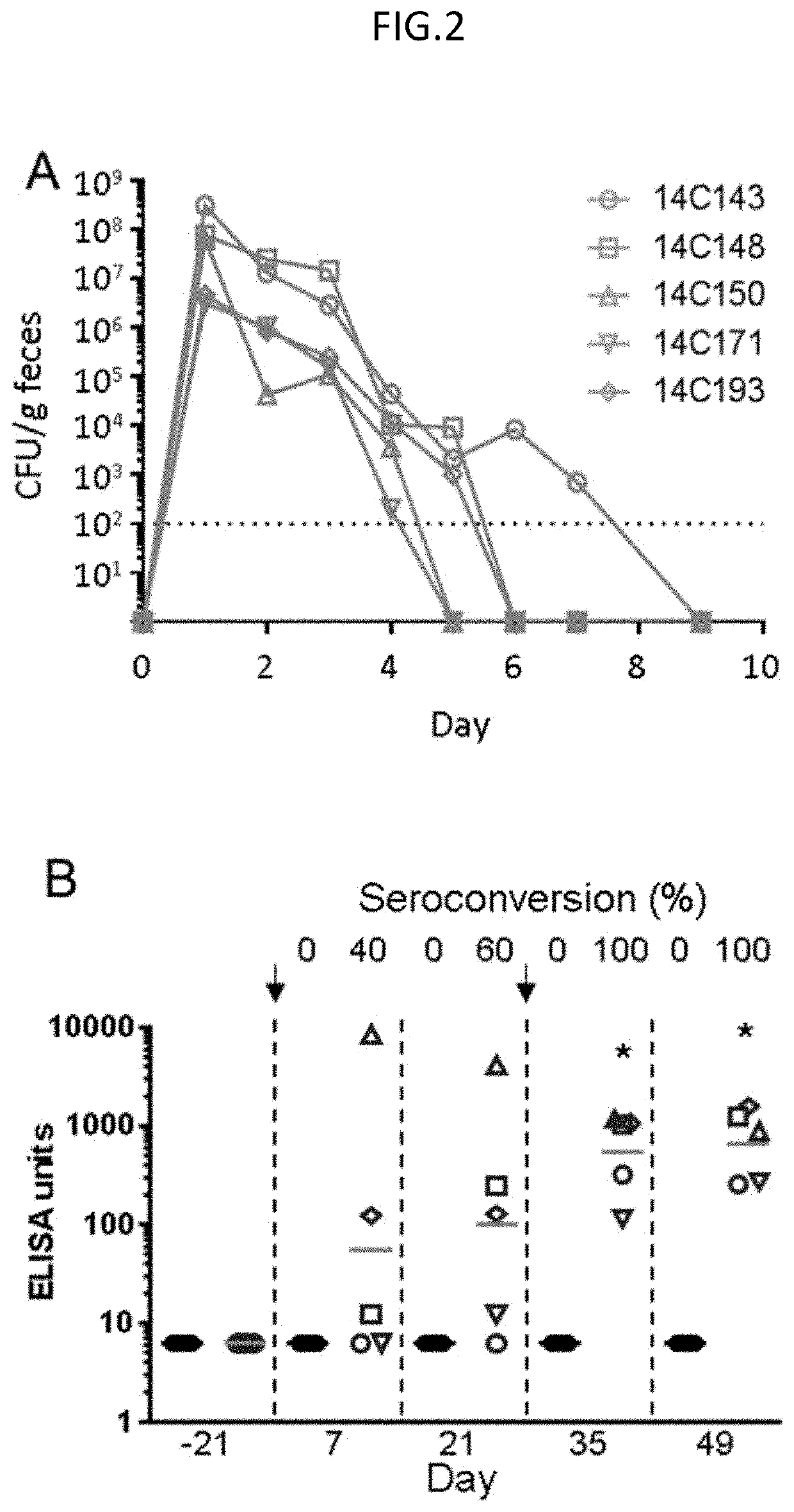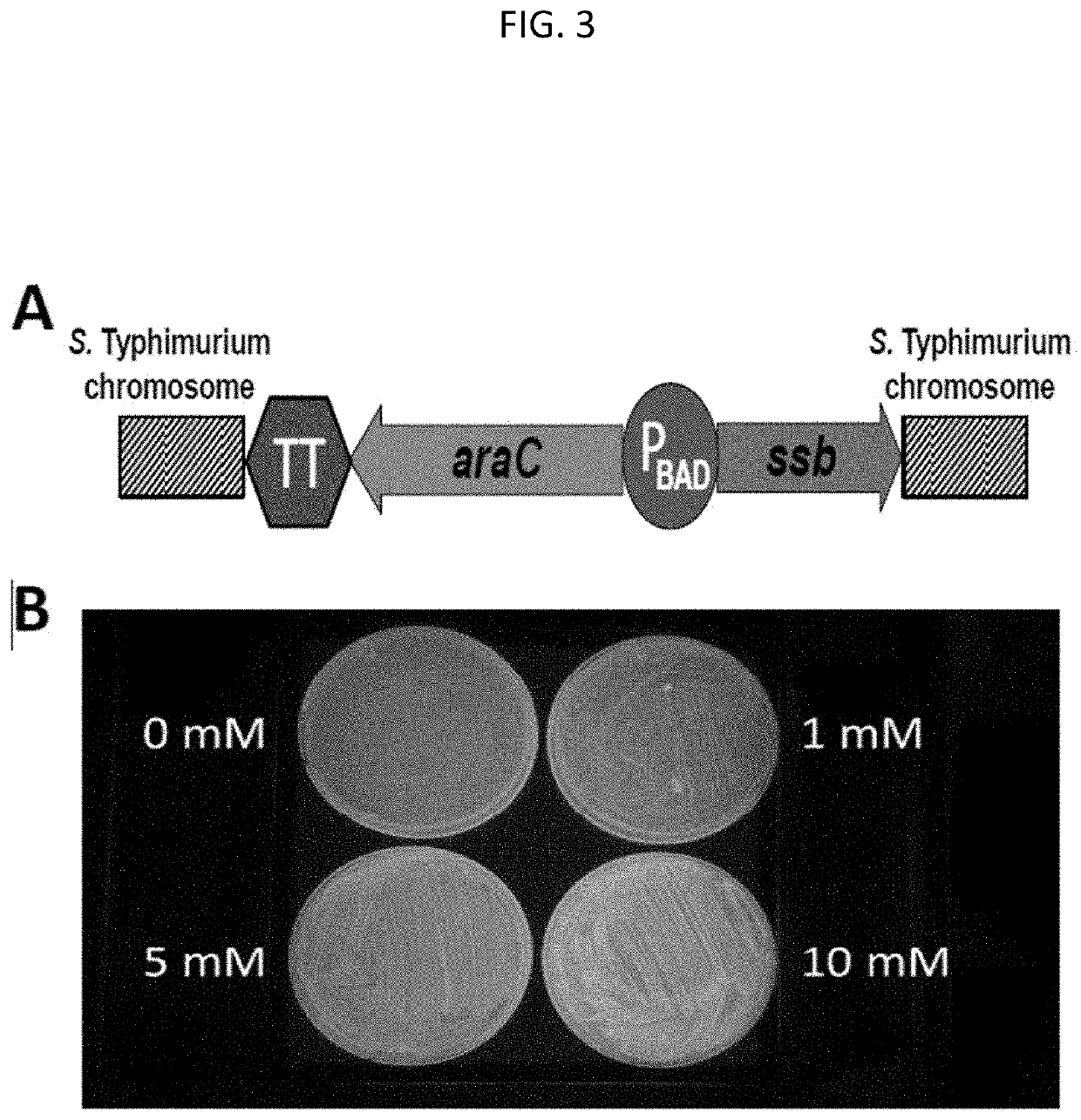Live Attenuated Non-Transmissible Vaccines
a non-transmissible, live technology, applied in the field of infectious diseases, molecular biology, can solve the problems of amplification of transmission and large multi-state outbreak, children are particularly susceptible to invasive infections, and ints disease is also a major health problem
- Summary
- Abstract
- Description
- Claims
- Application Information
AI Technical Summary
Benefits of technology
Problems solved by technology
Method used
Image
Examples
example 3
ngineering of Live Attenuated iNTS Vaccines
[0189]Aim 1. To genetically engineer our live attenuated iNTS vaccines, S. typhimurium CVD 1931 and S. enteritidis CVD 1944, such that ssb encoding the essential single stranded DNA-binding protein, SSB, will be transcriptionally regulated by a tightly controlled arabinose inducible promoter.
[0190]Genetic engineering of NTS such that ssb is controlled by an arabinose-inducible promoter. A synthetic TT-araC-PBAD transcription cassette (TT=transcription terminator) will be constructed and chromosomally integrated into S. typhimurium CVD 1931 and S. Enteritidis CVD 1944 upstream of ssb, replacing only the ssb promoter (Pssb) (FIG. 3A). To demonstrate tight transcriptional control of a gene downstream of the TT-araC-PBAD, we engineered a synthetic TT-araC-PBAD-gfpuv, inserted it into the high copy number pUC57 plasmid, and introduced this reporter plasmid into E. coli; expression of the GFPuv green fluorescence protein is therefore under the co...
example 5
Arabinose Inducible Growth
[0217]To test the effect of arabinose on the growth of D65Δssb::araC-PBAD and D65ΔaraBAD Δssb::araC-PBAD, frozen isolates of four strains were examined: 1] wild type D65, 2] D65Δssb::araC-PBAD, 3] D65ΔaraBAD, and 4] D65ΔaraBAD Δssb::araC-PBAD. All strains were first streaked for isolation on solid medium containing 0.5% arabinose and incubated overnight at 37° C. Isolated colonies of uniform size were then picked and subcultured in liquid medium containing 0.5% arabinose; cultures were then incubated overnight at 37° C. in an orbital shaker at 220 RPM. Cultures were then normalized by optical density (0D600) to 0.05, subcultured into 50 ml liquid medium in the presence or absence of 0.5% arabinose, and grown at 37° C., 220 RPM. Samples of each culture (1 ml) were removed every hour for 11 hours and OD600 determined. Plots for each LANT strain are shown in FIG. 13. All cultures grew normally until around 3 hours, at which point the LANT strains begin to dive...
example 6
Strains in the Absence of Arabinose
[0218]To determine if LANT strains remained viable in the absence of arabinose, the growth of D65Δssb::araC-PBAD and D65ΔaraBAD Δssb::araC-PBAD was re-examined. These isogenic LANT strains were first streaked for isolation on solid medium containing 0.5% arabinose and incubated overnight at 37° C. Isolated colonies of uniform size were then picked and subcultured in liquid medium in the presence or absence of 0.5% arabinose and again subcultured overnight at 37° C. Viable counts for each culture were then determined. Results are seen in the table below.
0.5% OD600STRAINara(CFU / ml)D65Δssb::araC-PBAD−5.5 × 103+6.0 × 108D65ΔaraBAD Δssb::araC-PBAD−2.0 × 103+4.0 × 108
[0219]Although LANT strains grown in the absence of arabinose remain viable, viable counts are 5 log 10 lower than the identical strain grown in the presence of 0.5% arabinose. In addition, deletion of the araBAD operon does not seem to affect the persistence of this LANT strain in the absen...
PUM
| Property | Measurement | Unit |
|---|---|---|
| area under the curve analysis | aaaaa | aaaaa |
| optical density | aaaaa | aaaaa |
| pharmaceutical composition | aaaaa | aaaaa |
Abstract
Description
Claims
Application Information
 Login to View More
Login to View More - R&D
- Intellectual Property
- Life Sciences
- Materials
- Tech Scout
- Unparalleled Data Quality
- Higher Quality Content
- 60% Fewer Hallucinations
Browse by: Latest US Patents, China's latest patents, Technical Efficacy Thesaurus, Application Domain, Technology Topic, Popular Technical Reports.
© 2025 PatSnap. All rights reserved.Legal|Privacy policy|Modern Slavery Act Transparency Statement|Sitemap|About US| Contact US: help@patsnap.com



